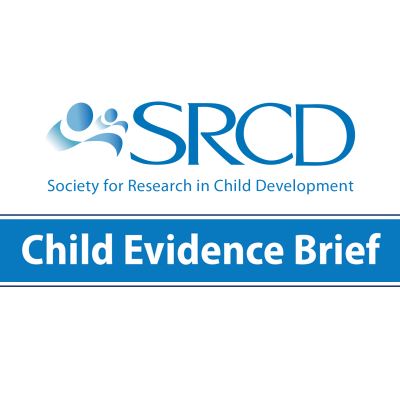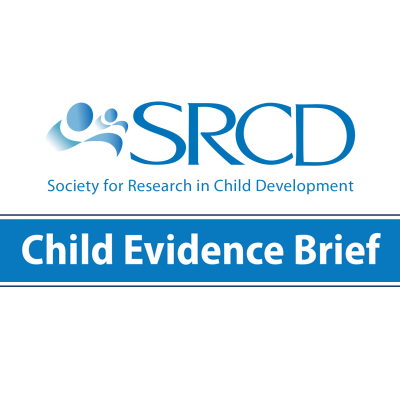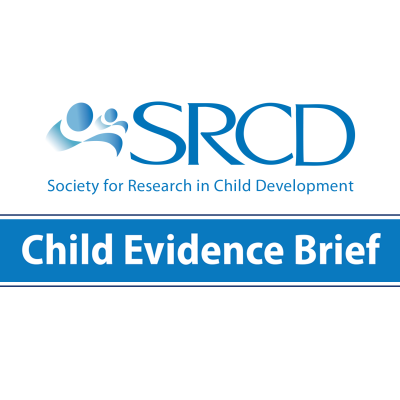Title IV-B Plays an Important Role in Preventing Child Welfare System Involvement
Edited by Rebekah Levine Coley, Ph.D., Boston College. For more information, contact the Society for Research in Child Development, at policy@srcd.org.
Authors
- Brenda Jones Harden, Ph.D., Columbia University
- Richard P. Barth, Ph.D., University of Maryland, Baltimore
Of the 7.1 million children referred to state child welfare systems annually due to alleged child maltreatment (e.g., physical abuse, sexual abuse, or neglect), nearly half are screened out and do not receive child welfare services despite potential markers of maltreatment risk. Due to Title IV-B of the Social Security Act’s flexibility and capacity to target root causes of maltreatment, Title IV-B services offer a critical strategy for preventing maltreatment and subsequent child welfare system involvement. Emerging evidence suggests that community response and differential response programs funded by Title IV-B are important initiatives to prevent child maltreatment. Evidence on the effectiveness of programs external to the child welfare system that prevent child maltreatment (e.g., income supports, parenting interventions, and early care and education programs) suggest Title IV-B should be used to provide case management and facilitate families’ access to supportive programs. Increasing Title IV-B funds while continuing flexibility of services would allow states to expand access to preventive services, decreasing the number of children experiencing maltreatment and child welfare involvement.
Many Children and Families Experience Ongoing Risks for Child Maltreatment
Child maltreatment, which is experienced by over 600,000 children in the United States,1 is associated with a range of adverse outcomes, including physical illnesses and injuries, developmental delays, academic challenges, and mental health problems.2-5 Of the more than 7 million children who were referred to state child welfare systems in 2020 due to perceived risks of maltreatment, only 1.1 million received ongoing child welfare services, leaving a large number of children and families at continued risk of child maltreatment.1 Several factors are associated with increased risk for maltreatment, including family member substance abuse and intimate partner violence as well as structural factors such as poverty, food insecurity, and housing instability.1,6-9 Due to the large number of children at risk for maltreatment and its negative consequences, it is critical to deliver services to prevent maltreatment and child welfare system involvement.
Title IV-B Provides Modest Yet Flexible Funding to Prevent Child Maltreatment
Title IV-B provides a relatively small allocation of flexible funds to states to deliver a wide range of family-based services to prevent child maltreatment.10,11 This limited funding for prevention stands in contrast to the far (more than 14 times) greater federal funding for Title IV-E, which covers the costs of foster care.10,11 The funding imbalance between these two programs has long been a national concern, only partially addressed by the Family First Prevention Services Act (FFPSA) that funds a limited set of evidence-based practices to prevent foster care placement.12,13 The flexibility of Title IV-B complements the rigorous standards of FFPSA, and combined, these programs offer a vital array of services to address family needs that may lead to child maltreatment.
A Variety of Title IV-B Services are Effective in Preventing Child Maltreatment
Due to its flexibility, Title IV-B can be used to support families’ access to a variety of programs and financial supports that help to prevent child maltreatment. Title IV-B increasingly has been used to fund two types of direct prevention and diversion approaches, including “community response” and “differential response.”
Community response (CR) programs focus on families reported to Child Protective Services (CPS) who do not meet criteria for maltreatment substantiation (i.e., finding that maltreatment occurred).14 Common features of these programs include case management, emergency financial assistance, housing assistance, and parent training. Emerging evidence points to the effectiveness of CR programs in preventing child maltreatment and further child welfare system involvement. For example:
- In Illinois, families who participated in the CR Parent Support Outreach program experienced fewer CPS reports and out of home placements and were more likely to receive adult mental health services than similar families with an open child welfare case.14
- A rigorous study in Wisconsin documented that CR participants were less likely to have subsequent CPS involvement than families who declined participation in the program.15
Differential response (DR) programs provide the option of receiving services without having a formal CPS investigation or a determination of substantiated maltreatment. DR programs assess family needs and deliver a continuum of services including parenting, mental health, and substance abuse interventions.16 Emerging evidence points to DR’s benefits in reducing child maltreatment and child welfare system involvement. For example:
- A recent study found that, compared to states without DR programs, states with DR programs had 19% fewer substantiated reports of child maltreatment, 25% fewer children substantiated for neglect, and a 17% reduction in foster care services.16
- A state-specific DR randomized evaluation documented reductions in substantiated maltreatment reports, child removals, and unsafe home environments (e.g., parental substance abuse) for families who received DR compared to control families.17
Title IV-B Funds Help Connect Families to Effective External Programs
Title IV-B funds are also used for case management services to connect families to an array of external programs with evidence of preventing maltreatment, such as:
Income support programs of various types have been associated with reduced rates of maltreatment.18
- Lower maltreatment rates have been found in states with state-level Earned Income Tax Credit programs18-20 and greater participation in Temporary Assistance for Needy Families18,21 compared to states with lower participation in such programs.
- Expanded access to child care subsidies,18 Medicaid,22 SNAP,18,23 and WIC23 has been associated with reduced maltreatment rates.
Parenting programs show benefits for families at risk for child welfare system involvement.
- Evidence-based home visiting programs have been found to reduce child maltreatment24-26 and child welfare system involvement,27,28 as well as improve parenting behaviors and child health and behavioral outcomes.29-33
- Parenting interventions, including relationship-based programs,29,31,34 parent management programs,28,35-37 and comprehensive multi-component programs,38-40 have been documented to reduce risk for child maltreatment.
Early childhood education programs with strong family support components have been found to reduce maltreatment risk.
- Children who participated in Early Head Start had fewer substantiated reports of physical and sexual abuse and foster care placements than children in the control group.41,42
- Children who participated in Title I Child-Parent Centers had significantly lower rates of maltreatment over the course of their childhood and adolescence than children in a control group.43
This evidence suggests that case management services facilitating parental access to effective financial, parenting, and early education supports is an appropriate role for Title IV-B programs to help prevent child maltreatment.
It is Critical to Expand Funding and Use of the Title IV-B Program
There is a glaring imbalance between the large numbers of children at risk for maltreatment and the structure of the federal child welfare system, wherein funding is tilted strongly towards intervention systems (after children experience maltreatment) rather than towards prevention of child maltreatment. An increase in Title IV-B funding would allow states to access additional federal funds and leverage state funds to expand preventive services, including community response and differential response programs, as well as case management services and the provision of income, parenting, and early education programs. The inherent flexibility of the Title IV-B program allows states to target their investments toward the root causes of child welfare system involvement and the needs of their state populations, decreasing the number of children experiencing maltreatment and entering foster care placements.
Endnotes/References
(1) U.S. Department of Health & Human Services, Administration for Children and Families, Administration on Children, Youth and Families, Children’s Bureau. (2022). Child Maltreatment 2020. Available from https://www.acf.hhs.gov/cb/data-research/child-maltreatment.
(2) Lanier, P., Jonson-Reid, M., Stahlschmidt, M. J., Drake, B., & Constantino, J. (2010). Child maltreatment and pediatric health outcomes: A longitudinal study of low-income children. Journal of Pediatric Psychology, 35(5), 511-522.
(3) Romano, E., Babchishin, L., Marquis, R., & Fréchette, S. (2015). Childhood maltreatment and educational outcomes. Trauma, Violence, & Abuse, 16(4), 418-437.
(4) Jonson-Reid, M., Kohl, P. L., & Drake, B. (2012). Child and adult outcomes of chronic child maltreatment. Pediatrics, 129(5), 839-845. (NSCAW#9).
(5) Putnam-Hornstein, E., Cederbaum, J. A., King, B., Eastman, A. L., & Trickett, P. K. (2015). A population-level and longitudinal study of adolescent mothers and intergenerational maltreatment. American Journal of Epidemiology, 181(7), 496-503.
(6) Drake, B., & Jonson-Reid, M. (2014). Poverty and child maltreatment. In J. Korbin & R. Krugman (Eds.) Handbook of child maltreatment (pp. 131-148). Dordrecht: Springer.
(7) Conrad-Hiebner, A., & Byram, E. (2020). The temporal impact of economic insecurity on child maltreatment: A systematic review. Trauma, Violence, & Abuse, 21(1), 157-178.
(8) Kim, H., Gundersen, C., & Windsor, L. (2022). Community food insecurity and child maltreatment reports: county-level analysis of US national data from 2009 to 2018. Journal of interpersonal violence, (advanced online publication). https://doi.org/10.1177/08862605221080148
(9) Marcal, K. E. (2022). Domains of housing insecurity: associations with child maltreatment risk. Child Abuse & Neglect, 131, 105696.
(10) Children’s Defense Fund. (2019). Child Welfare Federal Funding Streams: Title IV-B. https://www.childrensdefense.org/wp-content/uploads/2022/02/Child-Welfare Federal-Funding-Streams-Title-IV-B.pdf
(11) Rosinsky, K., Williams, S.C., Fischer, M., & Haas, M. (2022). Child Welfare Financing SFY 2018: A survey of federal, state, and local expenditures. Bethesda, MD: Child Trends.
(12) Gelles, R. J. (2017). Creating an Effective Child Welfare System. In Manhattan Institute (Eds.), Urban Policy Frontiers, (pp. 59-71). Manhattan Institute.
(13) Haskins, R. (2020). Child welfare financing: What do we fund, how, and what could be improved?. ANNALS of the American Academy of Political and Social Science, 692(1), 50-67.
(14) Millett, L. S. (2019). Outcomes from early child maltreatment prevention program in child protective services. Children and Youth Services Review, 101, 329-340.
(15) Maguire-Jack, K., & Bowers, J. (2014). Marathon County Community Response. Child Welfare, 93(5), 65-82.
(16) Johnson-Motoyama, M., Ginther, D. K., Phillips, R., Beer, O. W. J., Merkel-Holguin, L., & Fluke, J. (2022). Differential Response and the Reduction of Child Maltreatment and Foster Care Services Utilization in the U.S. From 2004 to 2017. Child Maltreatment, (advanced online publication). https://doi.org/10.1177/10775595211065761
(17) Loman, L. A., & Siegel, G. L. (2015). Effects of approach and services under differential response on long term child safety and welfare. Child Abuse & Neglect, 39, 86-97.
(18) Maguire-Jack, K., Johnson-Motoyama, M., & Parmenter, S. (2021). A scoping review of economic supports for working parents: The relationship of TANF, child care subsidy, SNAP, and EITC to child maltreatment. Aggression and Violent Behavior, 65, Article 101639.
(19) Berger, L., Sarah A. Font, S., Kristen S. Slack, K., & Waldfogel, J. (2017). Income and child maltreatment in unmarried families: evidence from the earned income tax credit. Review of Economics of the Household, 15, 4, 1345-1372.
(20) Klevens, J., Schmidt, B., Luo, F., Xu, L., Ports, K., & Lee, R. (2017). Effect of the earned income tax credit on hospital admissions for pediatric abusive head trauma, 1995-2013. Public Health Reports 132(4), 505-511.
(21) Albert, V., & Lim, J. (2019). Spatial analyses of the impact of Temporary Assistance for Needy Families on child neglect caseloads during the great recession. Journal of Social Service Research, 45(1), 59-75.
(22) Brown, E., Garrison, M., Bao, H., Qu, P., Jenny, C., & Rowhani-Rahbar, A. (2019). Assessment of rates of child maltreatment in states with Medicaid expansion vs states without Medicaid expansion. JAMA network open 2(6), e195529-e195529.
(23) Lee, B. & Mackey-Bilaver, L. (2007). Effects of WIC and Food Stamp Program participation on child outcomes. Children and Youth Services Review 29(4), 501-517.
(24) DuMont, K., Kirkland, K., Mitchell-Herzfeld, S., Ehrhard-Dietzel, S., Rodriguez, M. L., Lee, E., ... & Greene, R. (2010). A randomized trial of Healthy Families New York (HFNY): Does home visiting prevent child maltreatment. Rensselaer, NY: New York State Office of Children & Family Services and Albany, NY: The University of Albany, State University of New York.
(25) Lee, E., Kirkland, K., Miranda-Julian, C., & Greene, R. (2018). Reducing maltreatment recurrence through home visitation: A promising intervention for child welfare involved families. Child Abuse & Neglect, 86, 55–66.
(26) LeCroy, C. & Lopez, D. (2020). A randomized controlled trial of Healthy Families: 6 month and 1-year follow-up. Prevention Science, 21(1), 25-35
(27) Lowell, D., Carter, A., Godoy, L., Paulicin, B., & Margaret J. Briggs-Gowan, B. (2011). A Randomized Controlled Trial of Child FIRST: A Comprehensive Home-Based Intervention Child Development 82 (1), 193–208.
(28) Chaffin, M., Funderburk, B., Bard, D., Valle, L. & Gurwitch, R. (2011). A Combined Motivation and Parent–Child Interaction Therapy Package Reduces Child Welfare Recidivism in a Randomized Dismantling Field Trial. Journal of Consulting and Clinical Psychology, 79(1), 84–95.
(29) Dozier, M., & Bernard, K. (2019). Coaching Parents of Vulnerable Infants: The Attachment and Biobehavioral Catch-Up Approach. New York: Guilford.
(30) Dodge, K., Goodman, W.B., Murphy, R., O’Donnell, K., Sato, J. & Guptill, S. (2014). Implementation and Randomized Controlled Trial Evaluation of Universal Postnatal Nurse Home Visiting. American Journal of Public Health, 104(S1), S136–43.
(31) Oxford, M., Spieker, S., Lohr, M.J., & Fleming, C. (2016). Promoting First Relationships ®:Randomized Trial of a 10-Week Home Visiting Program With Families Referred to Child Protective Services. Child Maltreatment, 21(4), 267–77.
(32) Stronach, E., Toth, S., Rogosch, F., & Cicchetti, D. (2013). Preventive Interventions and Sustained Attachment Security in Maltreated Children. Development and Psychopathology, 25(4pt1), 919–30.
(33) Olds, D., Kitzman, H., Knudtson, M., Anson, E., Smith, J. & Cole, R. (2014). Effect of Home Visiting by Nurses on Maternal and Child Mortality: Results of a 2-Decade Follow-up of a Randomized Clinical Trial. JAMA Pediatrics, 168(9), 800.
(34) Suchman, N. E., DeCoste, C., Castiglioni, N., McMahon, T., Rounsaville, B., & Mayes, L. (2010). The Mothers and Toddlers Program, An Attachment-Based Parenting Intervention for Substance Using Women: Post-Treatment Results from a Randomized Clinical Pilot. Attachment & Human Development, 12(5), 483–504.
(35) Dishion, T. J., Mun, C. J., Drake, E. C., Tein, J. Y., Shaw, D. S., & Wilson, M. (2015). A transactional approach to preventing early childhood neglect: The Family Check-Up as a public health strategy. Development and Psychopathology, 27(4pt2), 1647-1660.
(36) Webster‐Stratton, C. & Reid, J. (2010). Adapting The Incredible Years, an Evidence‐based Parenting Programme, for Families Involved in the Child Welfare System. Journal of Children’s Services, 5(1), 25–42.
(37) Bugental, D. & Schwartz, A. (2009). A Cognitive Approach to Child Mistreatment Prevention among Medically At-Risk Infants. Developmental Psychology, 45(1), 284–288.
(38) Collins, K. S., Strieder, F., DePanfilis, D., Tabor, M., Clarkson-Freeman, P., Linde, L., & Greenberg, P. (2011). Trauma Adapted Family Connections: Reducing Developmental and Complex Trauma Symptomatology to Prevent Child Abuse and Neglect. Child Welfare 90(6), 29-47.
(39) Chaffin, M., Hecht, D., Bard, D., Silovsky, J., & Beasley, W.H. (2012). A statewide trial of the SafeCare home-based services model with parents in Child Protective Services. Pediatrics, 129(3), 509-515.
(40) Prinz, R. (2016). Parenting and Family Support within a Broad Child Abuse Prevention Strategy. Child Abuse & Neglect, 51, 400–406.
(41) Green, B. L., Ayoub, C., Bartlett, J. D., Von Ende, A., Furrer, C., Chazan-Cohen, R., ... & Klevens, J. (2014). The effect of Early Head Start on child welfare system involvement: A first look at longitudinal child maltreatment outcomes. Children and Youth Services Review, 42, 127-135.
(42) Green, B. L., Ayoub, C., Bartlett, J. D., Furrer, C., Chazan-Cohen, R., Buttitta, K., ... & Regalbuto, E. (2020). Pathways to prevention: Early Head Start outcomes in the first three years lead to long-term reductions in child maltreatment. Children and Youth Services Review, 118, Article 105403.
(43) Reynolds, A. J., & Robertson, D. L. (2003). School–based early intervention and later child maltreatment in the Chicago longitudinal study. Child Development, 74(1), 3-26.


